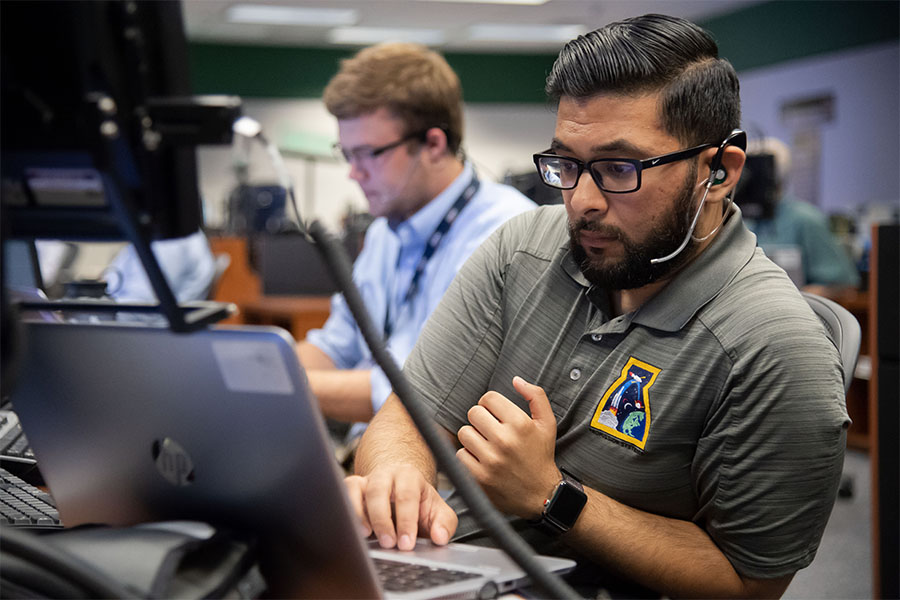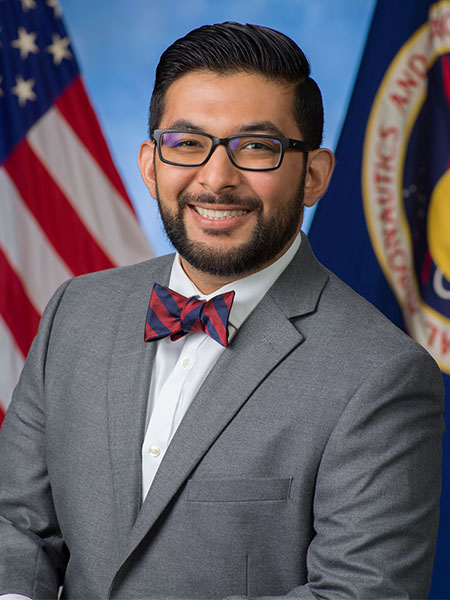Young Professionals Advisory Council: Ronak Dave

For as long as he can remember, Ronak Dave has been interested in flight, whether watching rocket launches or being curious about how airplanes fly. But it wasn’t until he was in high school in New Jersey that those particular interests narrowed into a career goal.
That’s when Dave stumbled upon the book, “Flight: My Life in Mission Control,” written by Chris Kraft. The book detailed Kraft’s account as NASA’s first flight director, including guiding Mercury missions that sent Americans to space for the first time, to Gemini, and to Apollo, which ultimately landed humans on the Moon.
For the first time, Dave realized “people actually do this.” And he saw his personal skills would be suited toward that kind of role.
“It was one of those things that drove me to where I am now,” Dave said.
At NASA.
At Johnson Space Center in Houston, the same place Kraft patrolled mission control.
As a flight controller — certified International Space Station Attitude Determination and Control Officer and CST-100 propulsion officer. The latter is for the upcoming CST-100 Starliner mission with NASA’s Commercial Crew Program that will regain U.S. capability to bring astronauts to the ISS. He also will be supporting the Exploration Missions, which include the Orion spacecraft’s Artemis missions, to return humans to the Moon.

It’s maybe even more than Dave could have hoped for, even after he felt Kraft’s book resonate, even after he chose the university tabbed as the “Cradle of Astronauts” for his college home, even after he did four rotations at NASA’s while a student at Purdue.
“I think I’m very much where I wanted to be and what I wanted to do,” said Dave, who earned his bachelor’s from the School of Aeronautics and Astronautics in 2014. “Now is a very exciting time where you’re moving from a lot of the development-type paperwork to really gaining tempo and getting closer to a launch and getting to ready to fly these things.”
Dave’s had plenty of pinch-me moments since he’s been at NASA, even during the grueling times. When he first started with the agency, he spent about two years training to become certified as a flight controller, an experience he likened to getting a master’s degree. It required significant studying and technical training, having that technical knowledge tested along the way, then having simulation training and on-the-job training concurrently. At the end of that, new flight controllers are saddled with night shifts. Dave said he worked 500-600 hours of overnights during his first year of certification. The ISS, obviously, needs constant monitoring as a 24-7 operation.
But it was during those nights that Dave experienced special moments, too.
“You look up and you see the big board, you see the screens, the cameras looking out and you’re at the pinpoint of human spaceflight. When you get to do that, it’s pretty wild, if you think about it,” he said. “Obviously everyone is incredibly, highly trained and you wouldn’t get to that point to be in that room alone until you’re at that point, but you’re talking about people who are two years out of college that are handed the keys to a $150-billion spacecraft.”
He’s appreciated being able to be involved in multiple programs, and the ability to learn new systems as well as utilize soft skills to teach the technical aspects to others were molded, in part, at Purdue. AAE’s reputation as a school that helps students “learn how to learn,” quickly and efficiently, has helped alumni adapt and thrive beyond college.
Dave has found that to be the case, and that help him cut his teeth as a flight controller with ISS, working console shifts, and now with propulsion work. It helped him handle the marathon of ISS work vs. the sprint mentality of other missions.
He shared his experiences earlier this fall with AAE students, as well as faculty, when he returned to Purdue for the first time since graduation in 2014 to be part of AAE’s Young Professionals Advisory Council. Dave had stayed connected with AAE as a mentor for Purdue’s NASA Micro-g Neutral Buoyancy Experiment Design teams, led by Professor Steven Collicott, who also spearheads YPAC.
“Just seeing the change that’s going on, the change in the development, the development of new capabilities and courses was interesting to see,” Dave said of his trip back to campus. “The faculty as a whole are still curious and willing to change in terms of feedback they get, whether it’d be from IAC-type people or more recent type graduates.
“From the faculty standpoint, it was just really interesting, to understand the challenges that are being faced by everyone and trying to work through those. But at the same time try to innovate and generate new and novel type, whether it be teaching methods or coursework, that allows a larger breadth of courses students can take and really find their niche. Aerospace is really considered a small field, but really there’s a lot you can do inside of it.”
